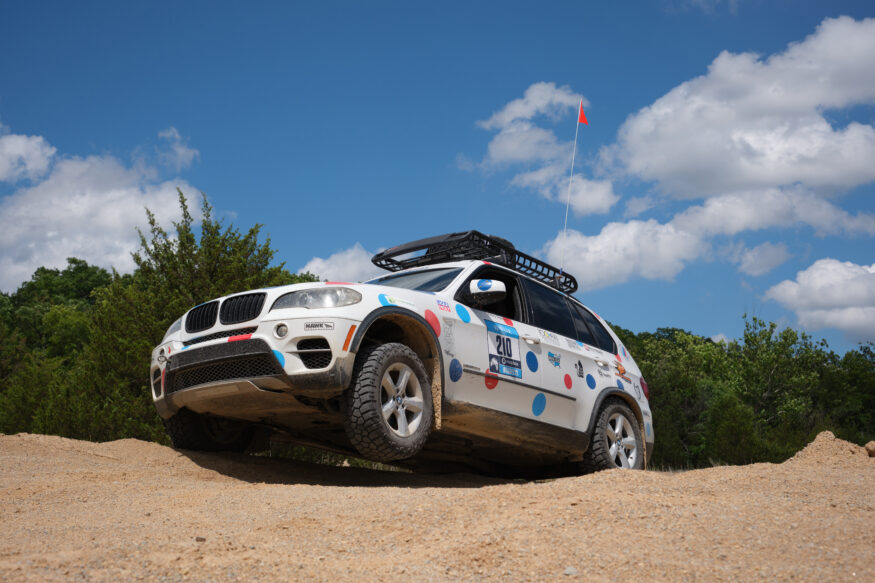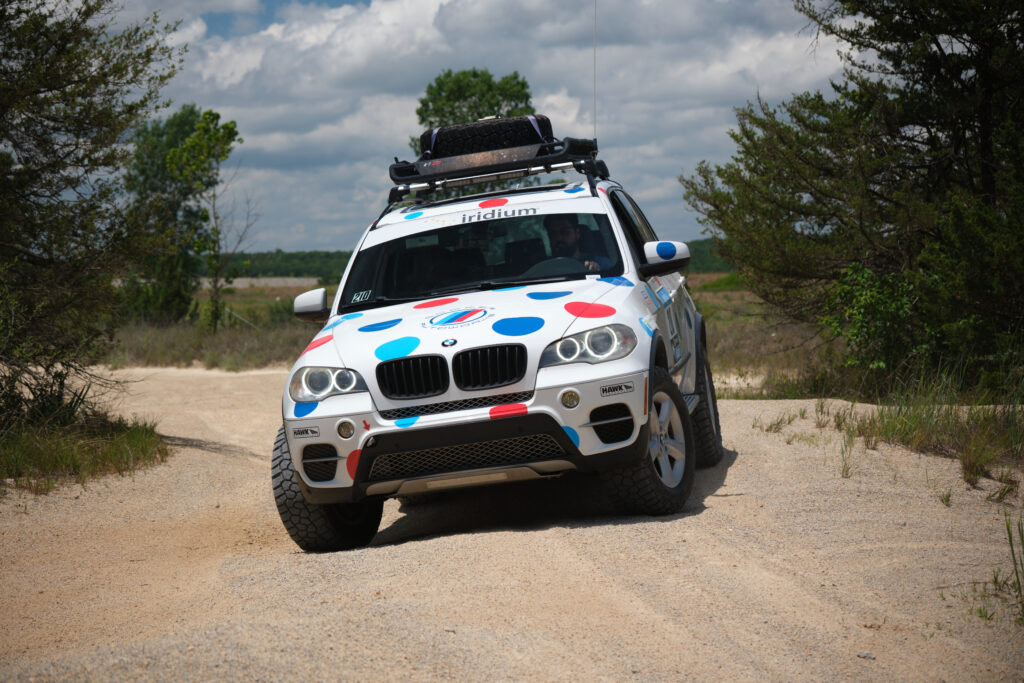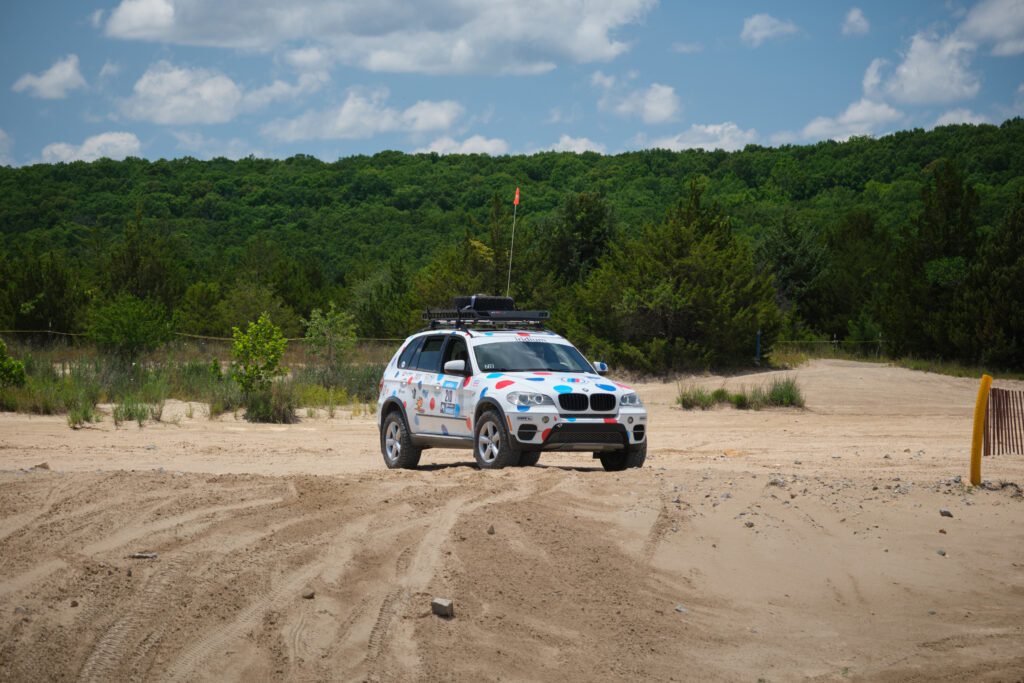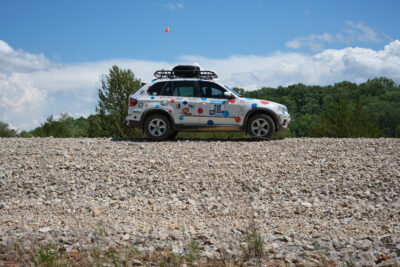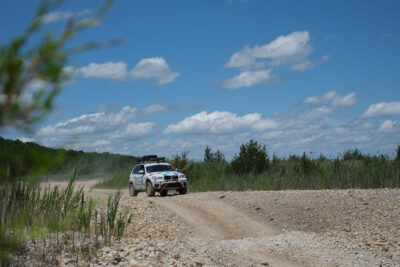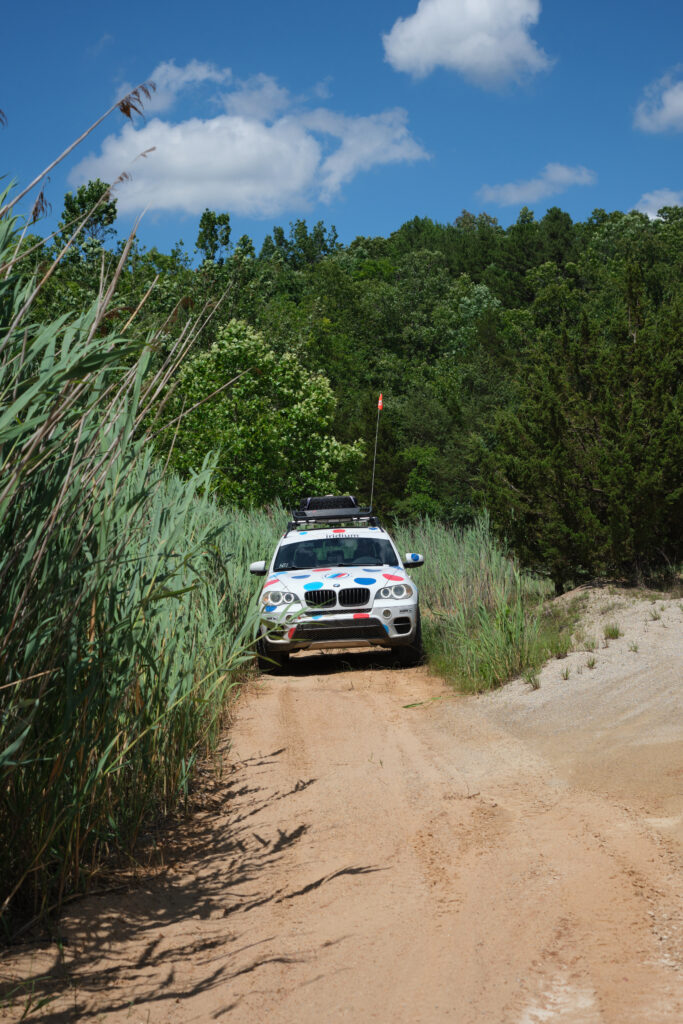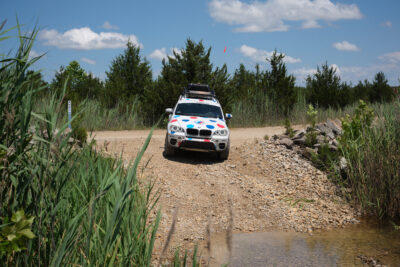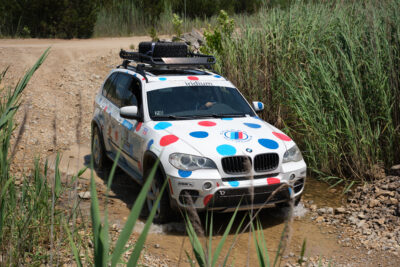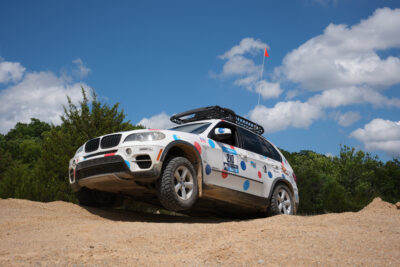It’s rare to see an X5 off the beaten path. While I have seen a small and dedicated group of folks online who like to take their BMWs off-roading, I’ve never actually come across another while out exploring. It’s understandable, because if you search for “X5 Off Road” the majority of articles you find are based on vehicle specs, but rarely firsthand experience. After all, the X5 is a midsize sport utility vehicle with the emphasis on luxury and sport.
You will also find plentiful online discussions comparing it to vehicles purpose built for off roading and stating the term “off road” only applies to the most extreme trails and obstacles. This can make it very difficult and overwhelming to get started. Luckily, when I am out adventuring, I rarely have internet access and everyone I have come across greets me with a smile and genuine curiosity about the polka-dot BMW.
I’m not going to try and define what I think off-roading is, or compare my vehicle to anything else. After all, comparison is the thief of joy. I simply enjoy testing the X5’s limits (as well as my own) and experiencing a life filled with adventure. For me, most of those adventures begin where the pavement ends, much like the camping trip I wrote about last month.
A lot of folks ask me how to get started. Though I am far from an expert, the best way is to start small and, if at all possible, to go with experienced friends. We went alone and managed our risk to prevent any problems. We had basic recovery equipment, but thankfully did not have to use it.
For this trip, my partner and I were back in my hometown over the weekend and made time to visit the local state park. I grew up in Park Hills, also known as the “lead belt” of Missouri because it’s the largest producer of lead in the United States. There, St. Joe State Park includes historic mines and extends 8,243 acres into the St. Francois Mountains. The ORV area is covered in a mix of sand tailings and rocks from the mines, so we wanted to have some fun exploring in the X5. This particular park only allows motor bikes, four-wheelers, and side-by-sides on its wooded trails, so full-size vehicles are limited to the open areas. This area is a fantastic space to practice off-roading basics as well as capture some great action shots.
One of the first skills any aspiring off-roader should practice is judging the surface you are driving on. Compare the second photo (above) where the X5 is parked on hard packed sand versus the loose soft sand in the third photo.
Hard packed sand will feel more like a stable and paved surface offering plenty of grip. On soft sand, the vehicle will sink, there is less traction, and the tires are more likely to spin. As a result, you are likely to feel the traction control kicking in. Smooth steady inputs and a bit of momentum is helpful. It had rained the day before we arrived, so some of these areas were wet. Wet sand is yet another surface change you should keep an eye out for and experience. Begin training your eyes to look for these often subtle differences in the ground’s color and texture and you’ll find that you can adapt to the driving conditions much quicker.
- Off roading in the Mineral area ROCKS!
- Since the state park sits along the Saint Francois Mountains there is plenty of elevation and rolling hills.
Each surface handles differently. We had fun driving up and down these rocky inclines. If you want to keep your front and rear bumpers in good condition you need to be aware of approach and departure angles when going up and down slopes or drops.
Another important skill to practice is driving over cambered surfaces and feeling the vehicle tilt from side to side. Most of our regular roadways are nearly level from left to right, so leaning the vehicle can be uncomfortable at first. The weight balance shifts compressing the suspension more on one side than the other. A compressed suspension cannot soak up bumps as effectively, so it’s important to watch for additional obstacles on the compressed side of the vehicle.
Driving down narrow trails helps you get accustomed to the size of your rig. The X5 is a midsize SUV, so it’s wider than many vehicles used for off-roading. Trails are often very narrow, especially during the summer when wild plants and brush are thick. Tall grasses are much nicer to your paint than brush and branches for practicing this skill, and its fantastic preparation for the next skill I’ll discuss.
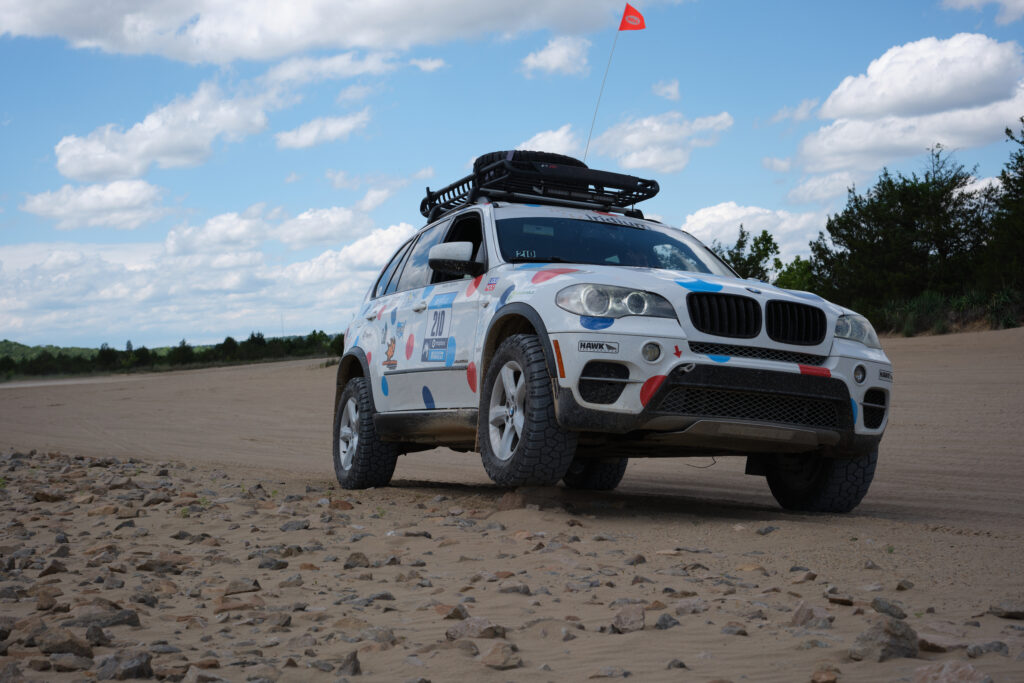
The rock is slightly smaller than the contact patch of the tire. This is an especially fun challenge for anyone who has been known to curb a wheel.
Tire placement is crucial when off roading. Knowing where all four tires are at all times means you can help avoid punctures, bent suspension components, and it helps you chose the best line through obstacles safely and successfully. We chose a rock small rock to practice perching the tires on.
- Pausing to evaluate the crossing before diving in is imperative for your own safety as well as your vehicle.
- Once the risk has been assessed you can safely splash!
Successfully navigating water crossings is another critical skill as they can be dangerous for both you and your vehicle. Don’t take unnecessary risks in the water. You should know the location of your engine’s air intake as that is where water can get in. Engines don’t appreciate ingesting non compressible fluids. Clear water makes it easy to check the depth before you jump in. Its always best to stop and take note of the waters depth, how fast it is moving, direction of flow, and the banks on either side. This aids in choosing the best and safest line across. Murky or muddy water makes judging crossings even more difficult. I highly encourage folks to learn water crossings with someone experienced and to never dive in—see what I did there?—alone!
The X5’s stiff chassis and lack of long travel suspension means it’s easy to practice feeling the vehicle’s weight balance. We found a few sharp drops and we drove up them on at an angle. We climbed them slow until we could just start to feel the weight shift to the front. We could make the whole SUV see saw back and forth just by moving a couple of inches forward or backward.
Taking time to practice the basics even in small ways like these is such a confidence builder and so much fun. Having these skills means we can also become safer and more skilled drivers in our day-to-day lives. Throw on a whip flag and visit your nearest ORV park, check out a trail on public land, or head down the scenic route on gravel. Even if your car isn’t considered an off-road vehicle by some, with good tires and a little bit of ground clearance you can explore just a little bit more of the world around you.—Kelsey Stephens

